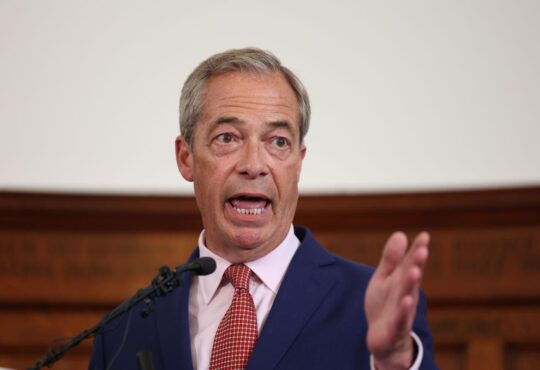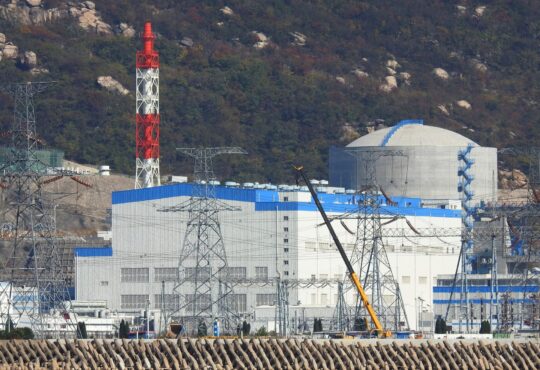‘Unless significant breakdown in US economy, 75 bps fed funds rate cut seems improbable in 2024’

“The current market sentiment indicates an expectation of less than two rate cuts by US Federal Reserve,” Arindam Mandal, the Portfolio Manager at Marcellus Investment Managers, says in an interview to Moneycontrol.
However, unless there’s a significant breakdown in the US economy, the likelihood of a 75 basis points rate cut seems improbable, he feels.
Arindam, who has more than 14 years of experience in the investment management, says the current inflationary outlook presents a significant near-term risk for the equity market. “The expectation of prolonged higher inflation appears to be materialising, particularly in the immediate future,” he says.
Are you worried about the Middle East crisis while focussing on the strategy for global markets?
Story continues below Advertisement
As we navigate through any crisis, we remain vigilant. While macroeconomic analysis isn’t our primary focus, we closely follow esteemed macroeconomists like Viktor Shvets, author of “The Great Rupture: Three Empires, Four Turning Points, and the Future of Humanity.” Shvets’ insights into geopolitical dynamics, inflation, and the future of equity market investing are particularly enlightening.
I agree with Viktor’s thoughts here, understanding that the early 2010s signaled the end of the Peace Dividend era and ushered in a turbulent geopolitical landscape likely to persist for years. This transition, characterised by escalating conflicts, can be termed the Cold versus Hot War dilemma. The evolution towards a Hot War hinges on the economic prowess and social cohesion of the US, China, and less liberal Eurasia, both internally and externally.
Factors such as national introversion, weakened economies, and sluggish growth contribute to rising risks, maintaining the Cold War as the baseline scenario. However, predicting the geopolitical trajectory remains uncertain.
Story continues below Advertisement
Amidst this backdrop, for long-term investment strategies, we identify the US and India as key destinations. Consequently, our global portfolio strategy primarily focuses on US stocks, employing a bottom-up stock selection with a balanced allocation between high-quality growth and cyclical companies that can provide us inflation-hedging.
Which are the countries looking attractive for investment now?
Valuation concerns, particularly high price-to-earnings ratios, have prompted increased interest in markets like China, Japan, and developed Europe, perceived as offering cheaper opportunities. While short-term trading prospects may arise in these markets, a long-term perspective highlights the enduring appeal of the US and India, consistent over the past few decades.
Do you think the inflation is really a big risk for the US Federal Reserve as the central bank has not given any hint about the beginning of a rate cut cycle?
Certainly, the current inflationary outlook presents a significant near-term risk for the equity market. The expectation of prolonged higher inflation appears to be materialising, particularly in the immediate future. Despite this, the remarkable resilience displayed by the US economy, particularly in terms of job creation, has been surprising. This trend is likely to exacerbate polarisation within the equity market as investors gravitate towards stocks offering earnings certainty.
Looking further ahead, we anticipate that disinflationary pressures stemming from technological advancements, increased financialisation, reliance on asset prices, and demographic disparities will persist, ultimately moderating inflation to more acceptable levels in the medium to long term. Moreover, any signs of weakness in the US economy, especially given the impending election year, are likely to elicit swift and decisive responses.
Do you still expect the Fed to deliver 75 bps rate cut in 2024?
The current market sentiment indicates an expectation of less than two rate cuts. However, unless there’s a significant breakdown in the US economy, the likelihood of a 75 basis points rate cut seems improbable. What’s more crucial is the potential divergence in monetary policy approaches, with the ECB and other developed nations possibly opting for rate cuts earlier than the US.
What is your strategy for India and do you expect strong earnings & economic growth to continue in FY25?
FY24 marks potentially the most favorable year for Nifty EPS revisions since FY08, which is indeed promising. However, sustaining premium market valuations necessitates EPS revisions for broad-based stock market performance akin to what was witnessed last year. While we broadly remain positive on the market, certain segments of the market, particularly in the small and mid-cap space, may face increasing scrutiny regarding valuations.
We maintain a higher level of comfort within the largecap space. In terms of themes, there are some cracks in the mass consumption side, thematically we are broadly positive on the following:
>> Premium/Aspirational Consumption and Services Boom: The rise of premium and aspirational consumption is not entirely novel, but the expanding role of services, such as wealth management, is expected to play a pivotal role in shaping consumer behaviour.
>> Industrial Renaissance: We find ourselves at a juncture akin to the United States in the 1980s, characterised by a wave of mergers in manufacturing that facilitated specialisation. This sector historically presents lucrative opportunities for capital allocation globally, and we aim to identify and capitalise on similar prospects within India, envisioning sustained growth over decades.
>> China + 1: With China’s economic landscape evolving and creating a US$300 billion per annum opportunity for India, the concept of diversifying supply chains away from China gains traction.
Are you still worried about China’s economic growth? Do you expect sharp rally in the China equity markets in rest of calendar year?
In my view, China’s economic growth faces considerable challenges, particularly in sustaining its consumption narrative. The control exerted by the ruling party over the economy and its populace poses hurdles to generating enduring growth. While sporadic policy actions may occur at both the state and local levels, they are unlikely to foster sustainable demand. Moreover, investments in manufacturing may lack a return-oriented focus, potentially hindering value creation and leading to what appears to be a liquidity trap.
The theme of “China’s Japanification,” which gained traction in the 2010s, holds relevance in terms of investment opportunities. Similar to Japan in the 1990s, China may offer numerous short-term trading opportunities in the coming years, but unlikely to be a sustainable.
What is your strategy behind the Global Compounder fund that invests mainly in largecap and midcap stocks?
Global Compounders portfolio invests in best-in-class companies that are run by exceptional capital allocators, listed in the US and developed Europe. Most of these companies are operating in industries less susceptible to disruption, thereby fortifying the moat of these companies over an extended period. While this approach may eschew the more flamboyant segments of the stock market, it has enabled us to identify consistently underexplored niches, offering ample room for discovery.
Achieving this entails rigorous research efforts, including comprehensive industry interviews, domestic and international site visits, and holistic analysis.
Knowingly we kept it a bit more mid cap heavy (or lower market cap heavy) as the opportunity to discover is more and valuation metrics are more palatable.
Disclaimer: The views and investment tips expressed by investment experts on Moneycontrol.com are their own and not those of the website or its management. Moneycontrol.com advises users to check with certified experts before taking any investment decisions.





